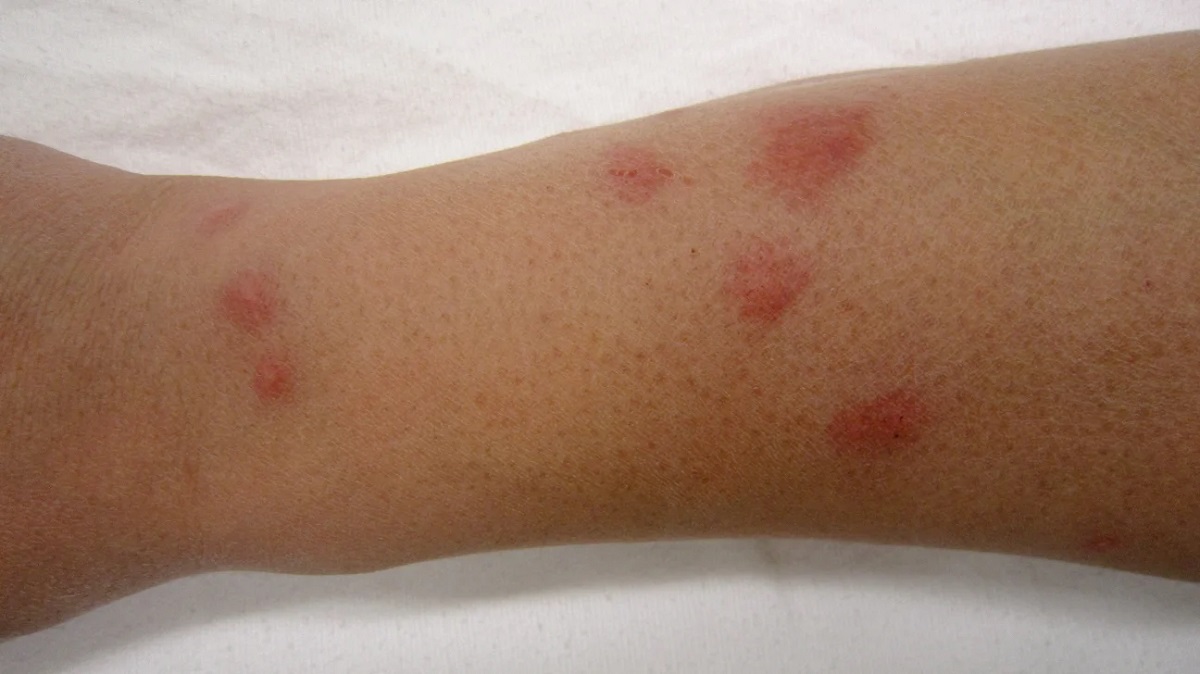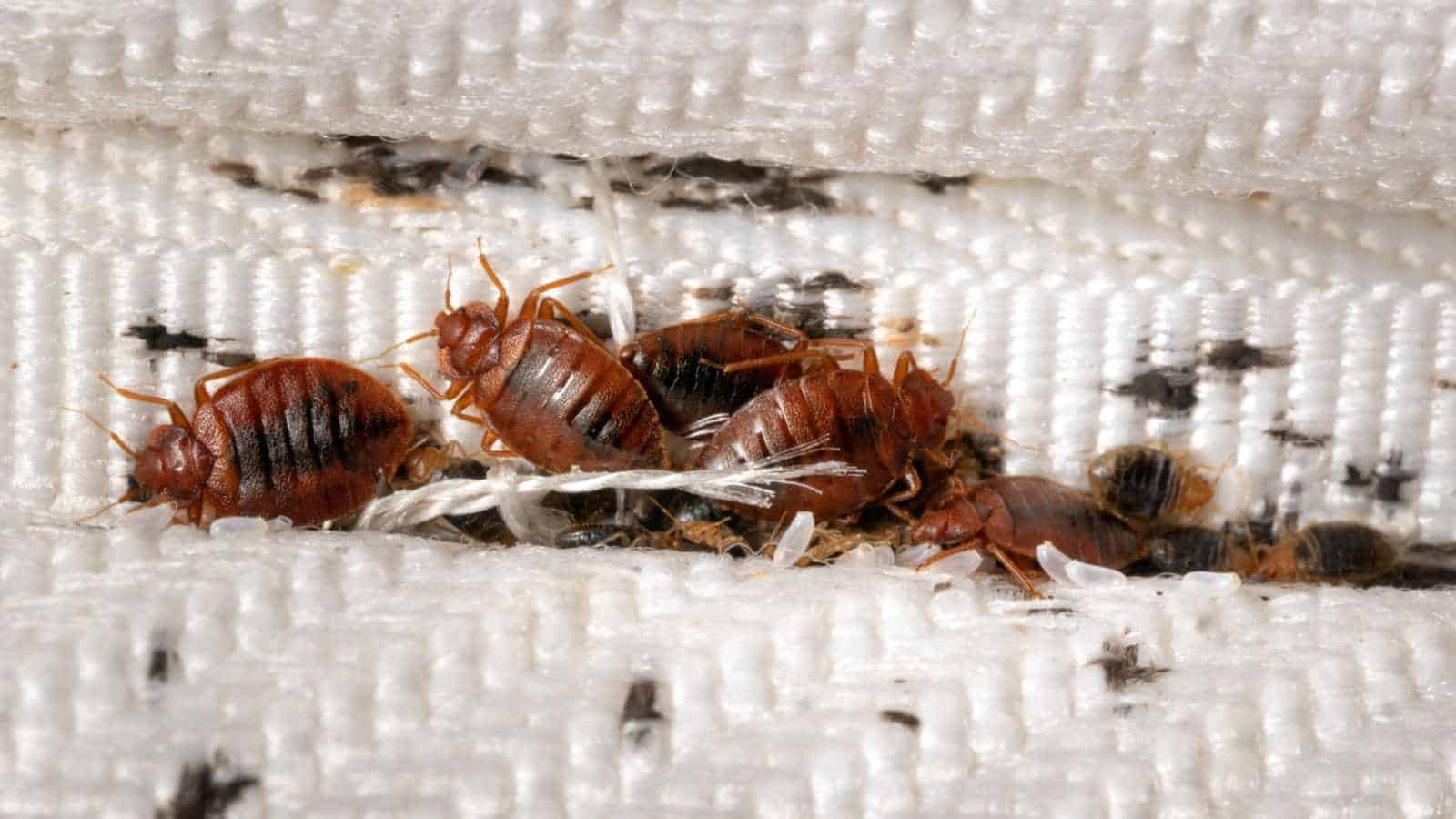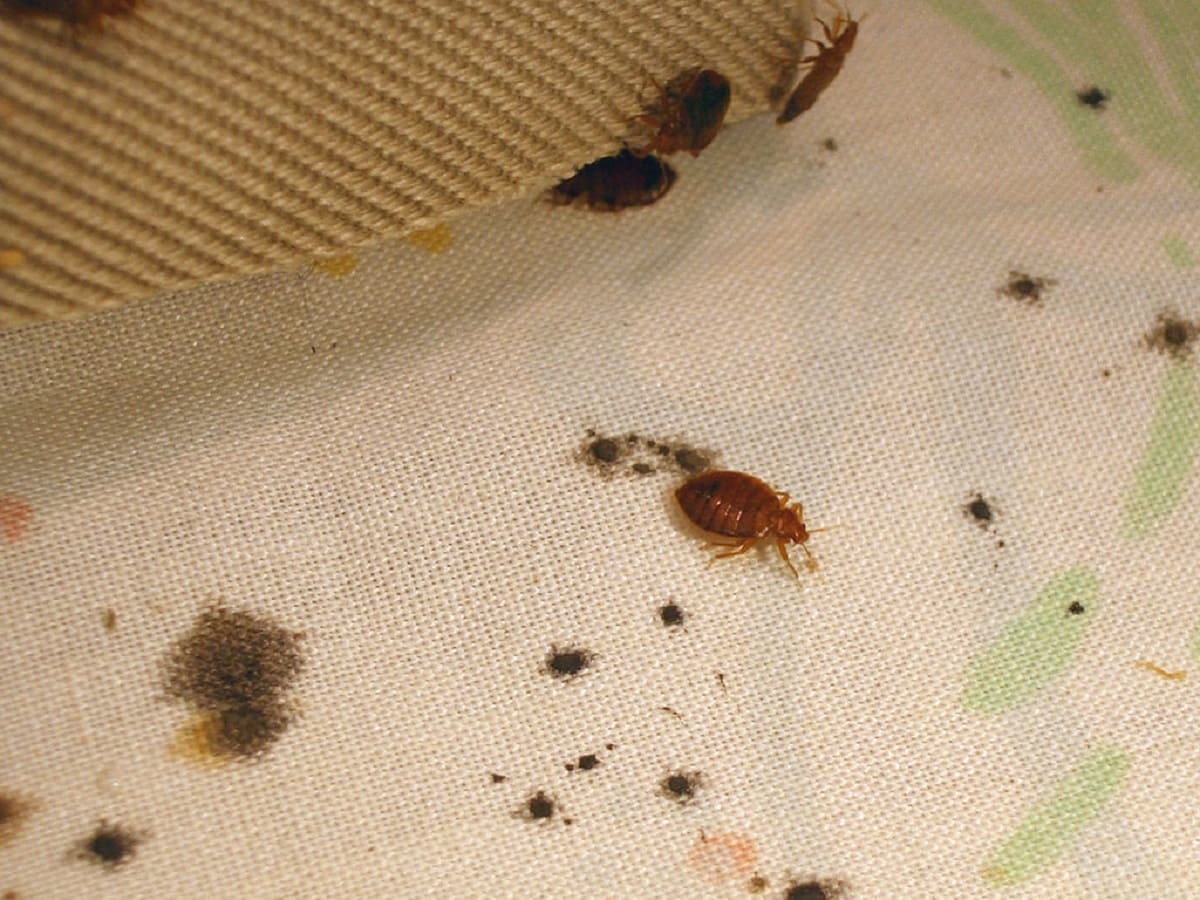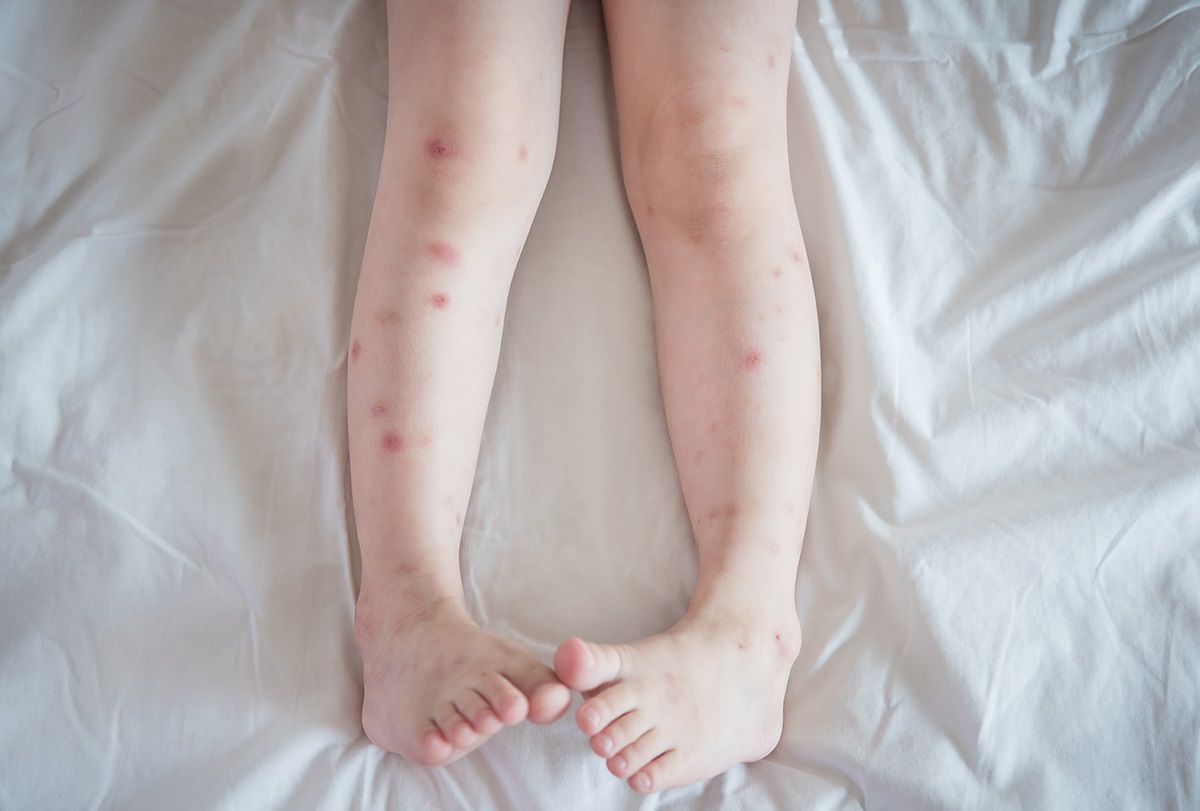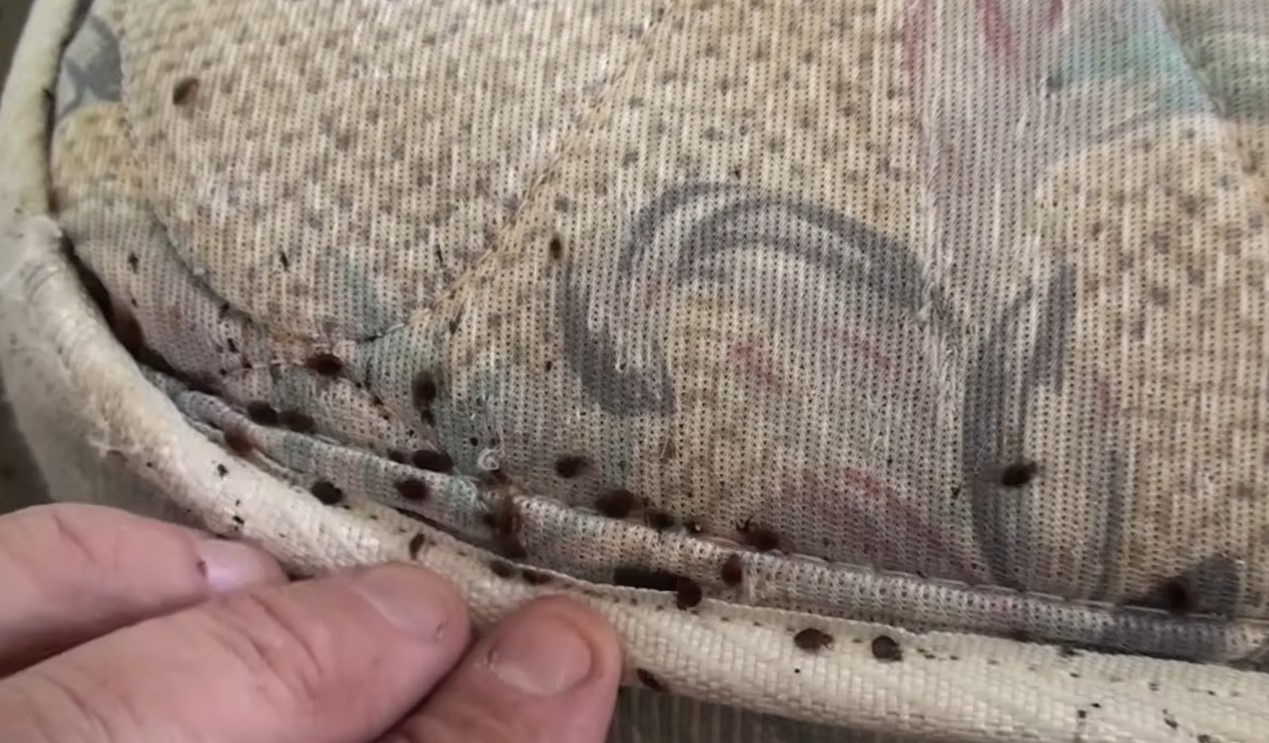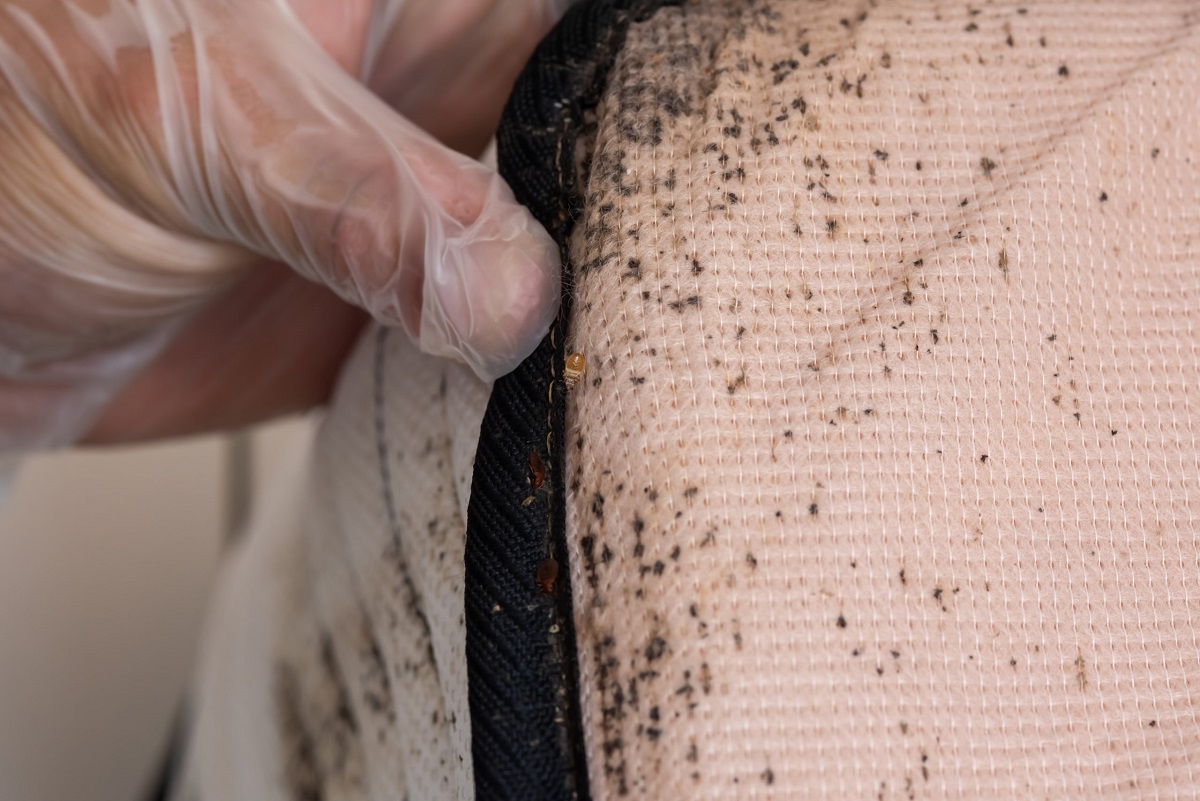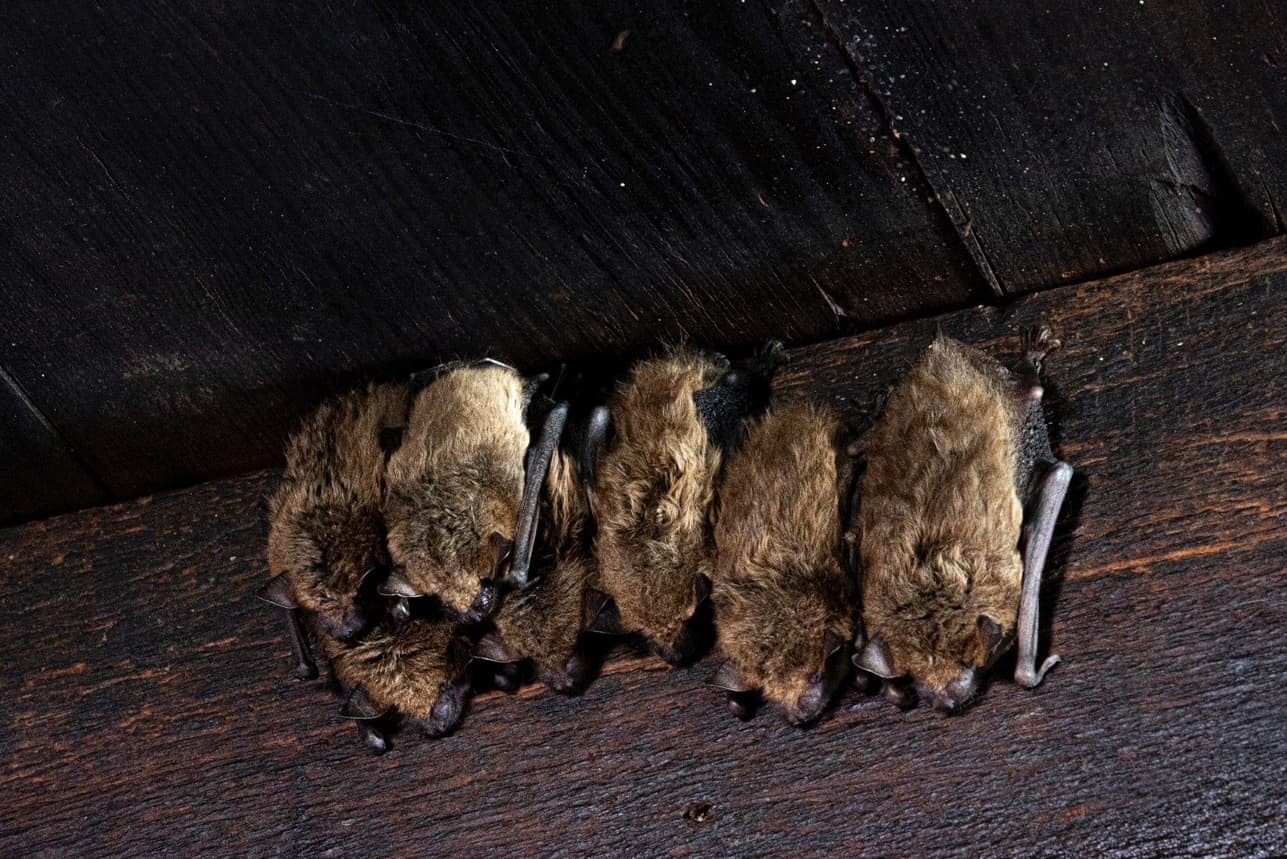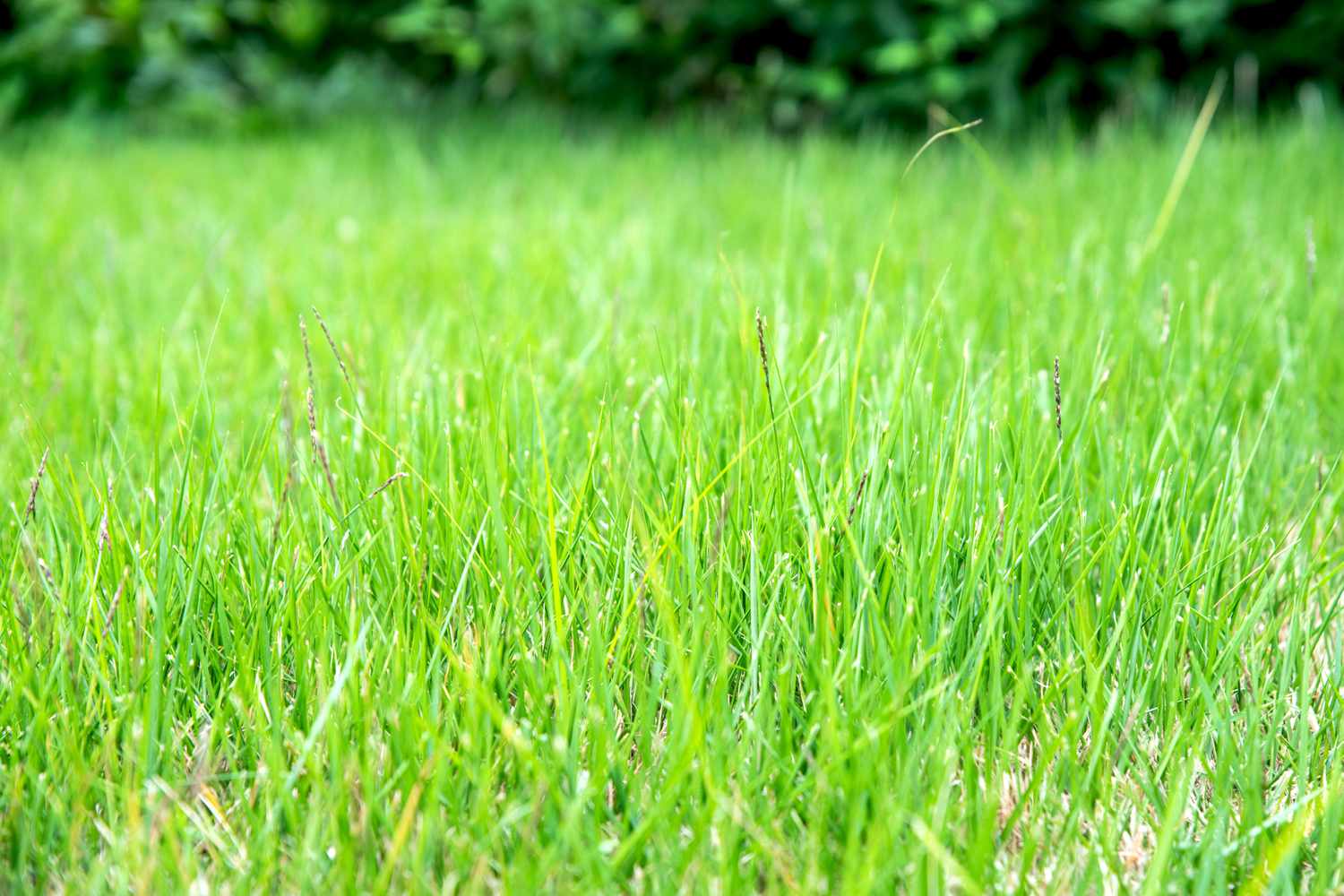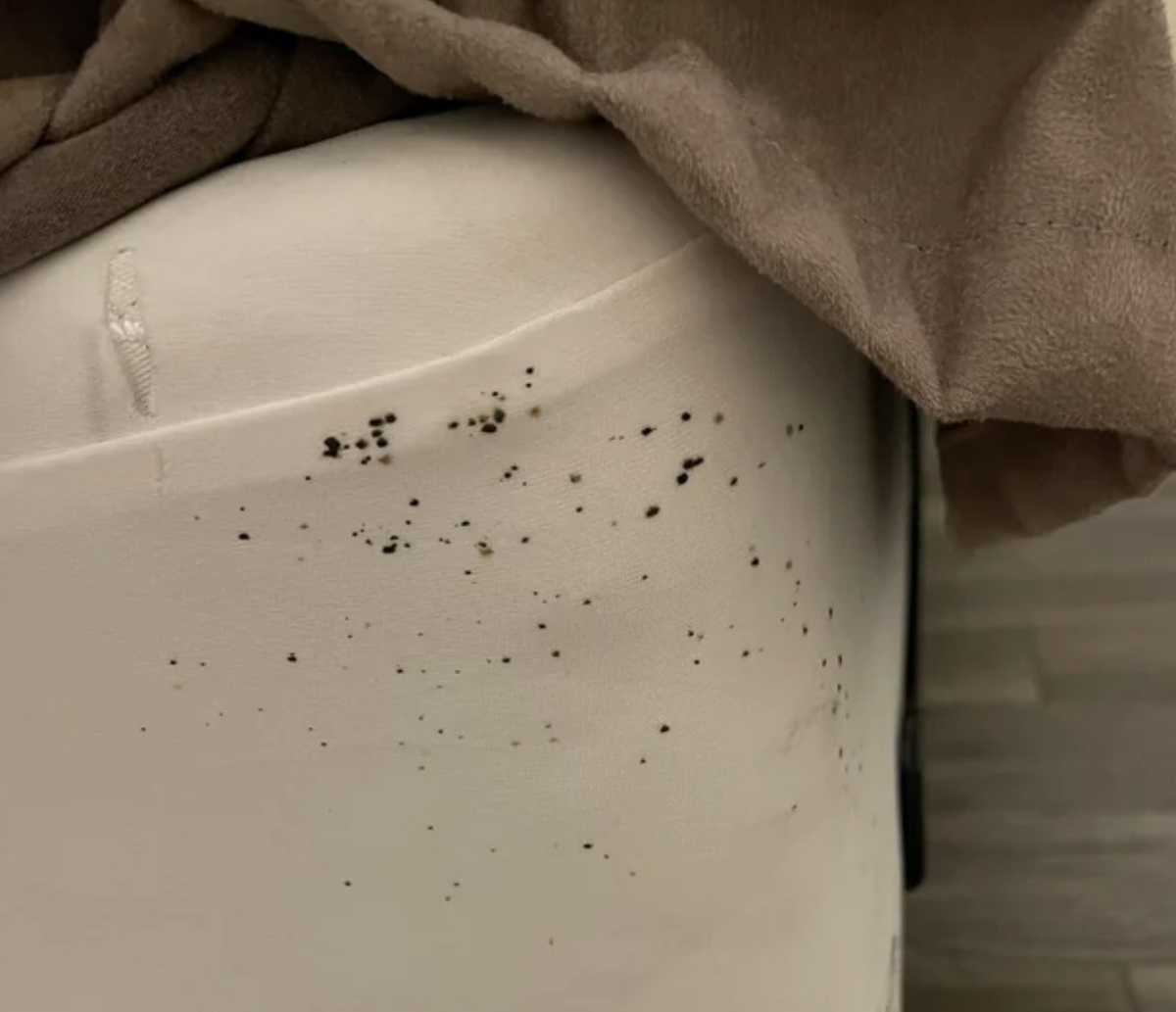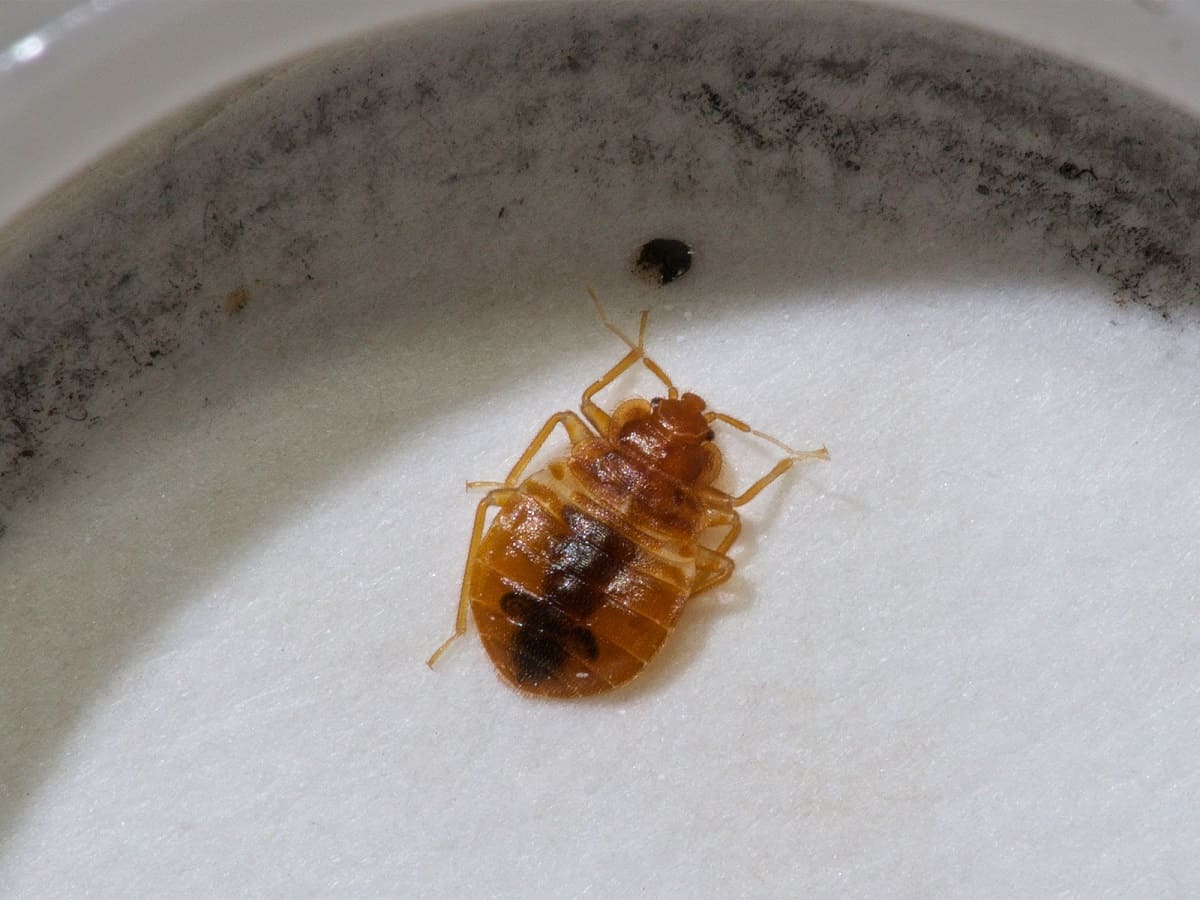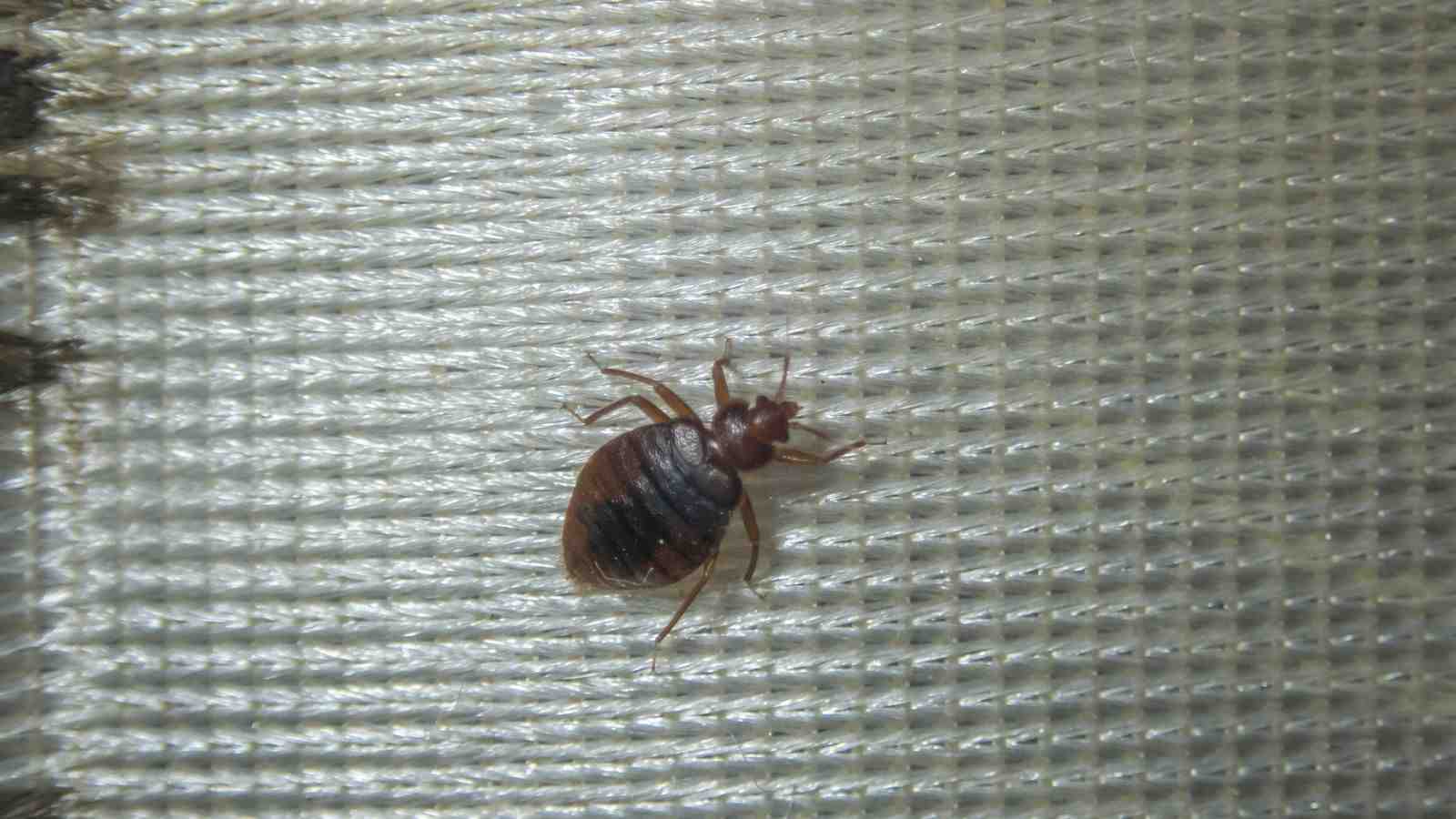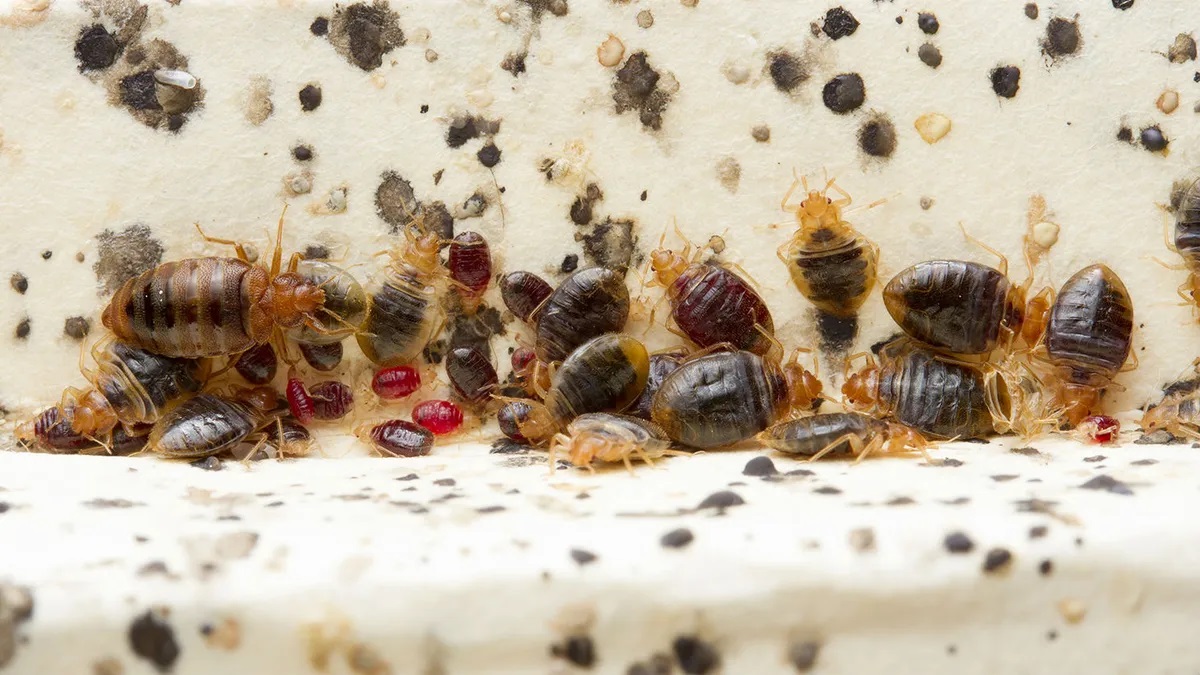Home>Furniture>Bedroom Furniture>How To Tell If You Have Bed Bug Bites
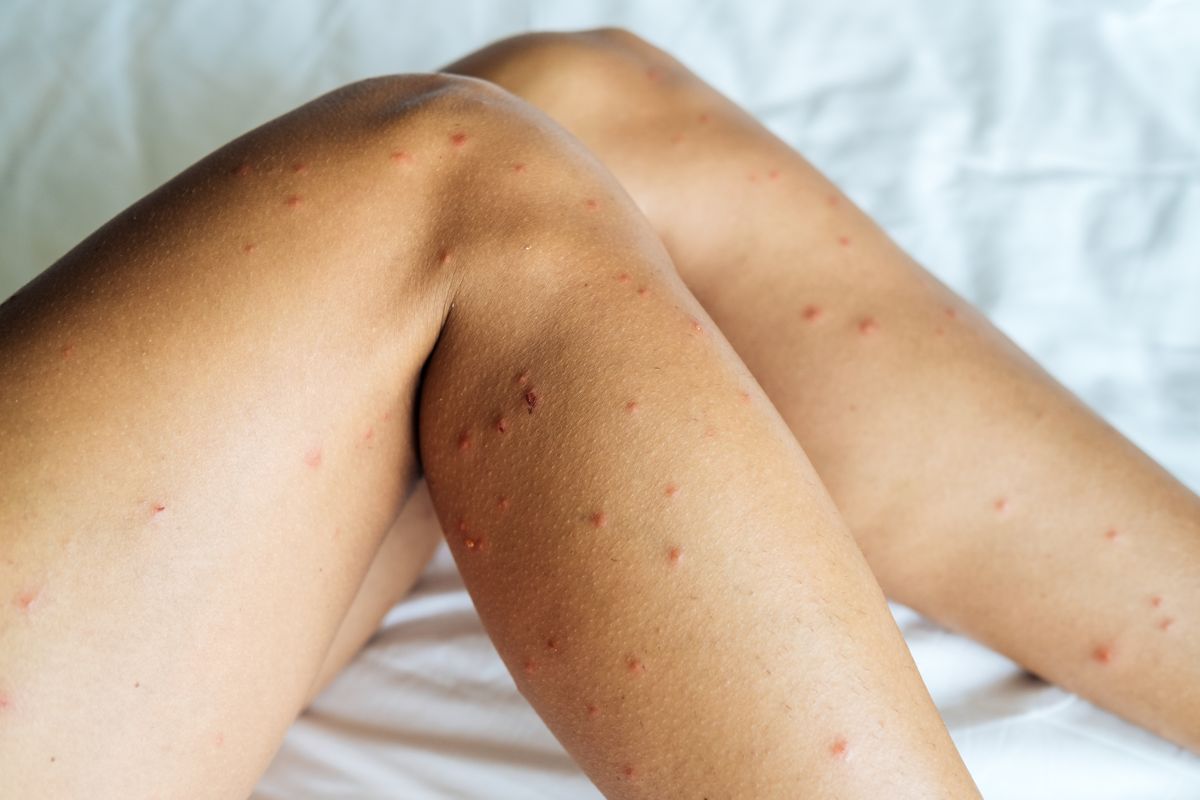

Bedroom Furniture
How To Tell If You Have Bed Bug Bites
Modified: February 25, 2024
Discover the signs of bed bug bites and determine if your bedroom furniture is infested. Learn what to look for and how to address the problem quickly.
(Many of the links in this article redirect to a specific reviewed product. Your purchase of these products through affiliate links helps to generate commission for Storables.com, at no extra cost. Learn more)
Introduction
Welcome to our comprehensive guide on how to tell if you have bed bug bites. Bed bug infestations can be a nightmare, and one of the telltale signs is the appearance of itchy, red bites on your body. In this article, we will discuss the common signs and symptoms of bed bug bites, how they differ from other insect bites, when to seek medical attention, and tips for preventing bed bug infestations.
Bed bugs are small, reddish-brown insects that feed on human blood. They are nocturnal creatures that hide in cracks and crevices, typically in mattresses, bed frames, and furniture. While they are most commonly found in bedrooms, bed bugs can infest any room in your home. Their bites can cause itching, discomfort, and allergic reactions in some individuals.
Identifying bed bug bites can be challenging because they can vary in appearance from person to person. Some people may have no reaction to bed bug bites, while others may have a severe allergic response. It’s important to note that bed bugs do not transmit diseases, but their bites can be a nuisance and cause significant distress.
In the following sections, we will delve deeper into the signs and symptoms of bed bug bites, their appearance, how they differ from other insect bites, and when it may be necessary to seek medical attention. We will also share some tips on how to self-diagnose bed bug bites at home and provide recommendations for preventing bed bug infestations in your living space.
So, if you suspect you may have bed bug bites or want to learn more about these pesky critters, keep reading to gain valuable insights and knowledge on how to identify and deal with bed bug bites effectively.
Key Takeaways:
- Don’t scratch that itch! Identifying bed bug bites can be tricky, but look for clustered, itchy, red bumps in a linear pattern to differentiate from other insect bites.
- When in doubt, seek help! If you suspect bed bug bites, monitor for allergic reactions, infections, or uncertain diagnosis, and consult a professional for accurate identification and guidance.
Read more: What Helps Bed Bug Bites
What are bed bug bites?
Bed bug bites occur when these blood-sucking insects feed on human blood. These bites are typically painless at the time they occur, as bed bugs inject a numbing agent into the skin to prevent the victim from feeling their bite. However, after a few hours or days, the bites can become itchy, red, and inflamed.
Bed bug bites usually appear in a clustered pattern or in a straight line, as these pests tend to feed in the same area multiple times. The bites can be found on any part of the body that is exposed during sleep, such as the face, neck, arms, hands, legs, and feet.
It’s important to note that not everyone reacts to bed bug bites in the same way. Some individuals may not have any visible signs of bites, while others may experience severe reactions. This can include intense itching, swelling, blistering, or even an allergic reaction. The severity of the reaction varies from person to person and may depend on the individual’s sensitivity to bed bug saliva.
One distinguishing characteristic of bed bug bites is their tendency to be in a linear or clustered pattern. This is because bed bugs feed by biting multiple times in a row, usually in close proximity. This pattern can help differentiate bed bug bites from other types of insect bites, such as mosquito bites, which tend to appear as isolated, random bumps on the skin.
It’s important to keep in mind that bed bug bites are not always reliable evidence of a bed bug infestation. Some individuals may not react to bed bug bites at all, while others may mistake the bites for other skin conditions. Therefore, it’s crucial to consider other signs of a bed bug infestation, such as the presence of live bugs, blood stains on bedding, or dark fecal spots on mattresses or furniture.
In the next section, we will examine the common signs and symptoms of bed bug bites in more detail, helping you to accurately identify these pesky bites and differentiate them from other insect bites.
Common signs and symptoms
Bed bug bites can vary in appearance and reaction from person to person. However, there are some common signs and symptoms that can help you identify if you have been bitten by these pests.
1. Itchy, red bumps: One of the most common symptoms of bed bug bites is the development of itchy, red bumps on the skin. These bumps may resemble mosquito bites or small welts. They are often accompanied by a noticeable level of itchiness.
2. Clustered or linear pattern: Bed bug bites tend to appear in a clustered or linear pattern. This is because bed bugs typically feed multiple times in a row, creating a line of bites on the skin.
3. Swelling: Bed bug bites can cause the affected area to become slightly swollen. This swelling is usually localized to the site of the bite and may vary in severity depending on the individual’s reaction.
4. Redness and inflammation: Along with the swelling, bed bug bites often exhibit redness and mild inflammation. The area around the bite may appear slightly raised and may feel warm to the touch.
5. Itchiness and discomfort: Bed bug bites can be extremely itchy, leading to a persistent urge to scratch the affected area. Scratching can further irritate the skin and increase the risk of secondary infection.
6. Delayed reaction: In some cases, the symptoms of bed bug bites may not appear immediately. It can take several hours or even a few days for the symptoms to manifest. This delayed reaction can make it challenging to identify the source of the bites.
7. Allergic reactions: While rare, some individuals may experience an allergic reaction to bed bug bites. This can manifest as intense itching, blistering, or even hives. If you suspect an allergic reaction, seek medical attention immediately.
It’s important to note that not everyone reacts to bed bug bites in the same way. Some people may show no symptoms at all, while others may have a more severe reaction. The appearance and severity of the bites can also depend on the individual’s sensitivity to bed bug saliva and the number of bites received.
In the next section, we will discuss the appearance of bed bug bites in more detail, helping you to differentiate them from other insect bites.
Appearance of bed bug bites
Bed bug bites can have a varied appearance, making them sometimes difficult to distinguish from other insect bites. However, there are certain characteristics that can help you identify a bed bug bite.
1. Small, red bumps: Bed bug bites often appear as small, raised bumps on the skin. These bumps are usually red or pink in color and can be slightly swollen. They may resemble mosquito bites or flea bites.
2. Clustered or in a line: Bed bug bites typically occur in a clustered or linear pattern. This is because bed bugs tend to feed on multiple areas close to each other. Therefore, you may notice a series of bites in a straight line or a cluster of bites in a localized area.
3. Itchy and irritating: Bed bug bites are known to be accompanied by intense itching and irritation. The itchiness can be persistent and often worsens if you scratch the bites. However, it’s crucial to resist the temptation to scratch, as it can lead to skin breakage and increase the risk of infection.
4. Delayed reaction: One distinguishable feature of bed bug bites is that they may not appear immediately after being bitten. It can take several hours or even days for the symptoms to develop. This delayed reaction can make it challenging to identify the cause of the bites.
5. May appear as blisters or hives: In rare cases, bed bug bites can cause the skin to develop blisters or hives. This is more common in individuals who are highly allergic to bed bug saliva. If you experience severe swelling, blistering, or any signs of an allergic reaction, seek medical attention.
It’s important to keep in mind that bed bug bites can vary from person to person. Some individuals may have no reaction to bed bug bites at all, while others may experience more severe symptoms. In addition, the appearance of bed bug bites can also be influenced by factors such as the individual’s immune response and the number of bites received.
In the following section, we will discuss the key differences between bed bug bites and other insect bites, helping you to accurately identify the source of your bites.
The difference between bed bug bites and other insect bites
When you notice bites on your skin, it’s natural to wonder what caused them. Determining whether the bites are from bed bugs or other insects can help you take appropriate measures to address the infestation and prevent future bites. Here are some key differences to help you distinguish bed bug bites from other insect bites:
Mosquito Bites: Mosquito bites often appear as raised, round, and puffy bumps on the skin. They can be itchy and usually occur in exposed areas such as arms, legs, and face. Mosquito bites typically occur outdoors or near areas with standing water, and the bites are usually random and isolated.
Flea Bites: Flea bites are commonly found around the ankles and lower legs. They appear as small, red bumps with a red halo around them. Flea bites are extremely itchy and can develop into a rash if scratched excessively. If you have pets, consider the possibility of a flea infestation in the house.
Spider Bites: Spider bites can have varying appearances depending on the species. They often appear as a single, raised bump with redness around it. Spider bites can be painful and may have a visible puncture mark at the center. It’s important to note that not all spider bites are dangerous or cause severe symptoms.
Tick Bites: Tick bites are often painless and may go unnoticed at first. The bite site may appear as a small, red spot or a raised welt. Ticks can stay attached to the skin for an extended period, so be vigilant in checking for ticks if you have been in areas where they are prevalent.
Bed Bug Bites: While the appearance of bed bug bites can vary, they tend to be small, red welts that are itchy and can be clustered or in a linear pattern. Unlike mosquito bites, bed bug bites are usually not random or isolated but occur in groups. Bed bug bites commonly appear on exposed areas during sleep, such as the face, neck, arms, hands, and legs.
Remember that the appearance of bites alone may not be sufficient to positively identify the culprit. It is important to consider other factors like the location, pattern, frequency, and other signs of infestation, such as live bugs or fecal spots, to accurately determine the presence of bed bugs.
If you suspect a bed bug infestation, it is recommended to consult with a pest control professional to confirm the presence of bed bugs and to develop a plan for elimination.
In the next section, we will discuss when it may be necessary to see a doctor regarding bed bug bites.
Inspect your skin for small, red, itchy welts in a clustered or linear pattern. Look for blood spots on your sheets and a musty odor in your bedroom. If you suspect bed bugs, consult a professional for confirmation and treatment.
Read more: How To Keep Bed Bugs From Biting You
When to see a doctor
In most cases, bed bug bites can be treated at home with self-care measures. However, there are certain situations where it may be necessary to seek medical attention for bed bug bites:
Allergic reactions: If you experience severe swelling, widespread itching, difficulty breathing, or any signs of an allergic reaction, it is important to seek immediate medical attention. Allergic reactions to bed bug bites are rare but can be serious, so it’s crucial to get prompt medical help in such cases.
Infection: If you notice signs of infection around the bite area, such as increasing pain, redness, warmth, swelling, pus, or drainage, it is recommended to see a doctor. Infections can occur from excessive scratching or from introducing bacteria into the broken skin.
Secondary skin complications: If the bed bug bites are causing significant skin irritation, resulting in blisters, hives, or a widespread rash, it is advisable to consult a healthcare professional. They can provide appropriate treatment to relieve your symptoms and prevent further complications.
Uncertain diagnosis: If you are unsure whether the bites are from bed bugs or another source, or if the symptoms do not improve with home remedies, it may be beneficial to consult with a medical professional. They can examine the bites, take into account your medical history, and provide a proper diagnosis.
Pre-existing medical conditions: If you have pre-existing medical conditions, such as a weakened immune system, or if you are on medications that may complicate the treatment of your bites, it is advisable to seek medical advice. Your healthcare provider can guide you on the most appropriate course of action based on your individual circumstances.
If you visit a healthcare professional regarding bed bug bites, they may prescribe antihistamines or topical corticosteroids to alleviate itching and reduce inflammation. They may also provide guidance on wound care to prevent infection and suggest additional measures to address the underlying bed bug infestation.
Remember that prevention is key when dealing with bed bug bites. In the next section, we will provide some tips to help you prevent these bothersome pests from infesting your living space.
How to self-diagnose bed bug bites at home
If you suspect you have been bitten by bed bugs, there are steps you can take to help self-diagnose at home. While these methods are not foolproof, they can provide some insights into the possibility of bed bug bites:
1. Examine the bites: Carefully examine the bites on your skin to determine their appearance and characteristics. Look for small, red bumps that may be clustered or in a linear pattern. Take note of any itching or irritation associated with the bites.
2. Check for other signs of infestation: Look for any signs of bed bugs in your living environment. This can include live bugs, shed skins, or dark brownish-black stains on your mattress, bed frame, or nearby furniture. Bed bugs are typically most active during the night, so it may be helpful to use a flashlight during your inspection.
3. Monitor your symptoms: Pay attention to the progression of your symptoms. Bed bug bites often appear several hours or days after being bitten, so track any changes in the appearance or severity of the bites over time. Itchiness and redness are common symptoms associated with bed bug bites.
4. Compare with reference images: Look up reference images of bed bug bites online to compare them with your own. Understand that individual reactions to bed bug bites can vary, so your bites may not exactly match the images. However, comparing your bites to reference images can provide some guidance.
5. Rule out other causes: Consider other potential causes of the bites, such as mosquito bites, flea bites, or spider bites. Evaluate the characteristics of the bites, their location on your body, and any other symptoms you may be experiencing to rule out alternative explanations.
6. Seek professional help if uncertain: If you are uncertain about the cause of your bites or if your symptoms are severe or persisting, it is advisable to consult a medical professional or a pest control expert for a more accurate diagnosis.
Remember, self-diagnosis at home may not be conclusive, as there are instances where bites from different insects can have similar characteristics. If you suspect a bed bug infestation, it is recommended to seek professional help for proper identification and effective eradication of the pests.
Next, we will provide some tips for preventing bed bug bites and minimizing the chances of infestation in your home.
Tips for preventing bed bug bites
Preventing bed bug bites starts with minimizing your risk of encountering these pests and taking proactive measures to prevent their infestation. Here are some tips to help you prevent bed bug bites:
Maintain cleanliness: Keeping your living space clean and clutter-free can help prevent bed bugs from finding hiding spots. Regularly vacuum and clean your floors, furniture, and bedding. Pay special attention to mattress seams, bed frames, and cracks and crevices where bed bugs may hide.
Inspect secondhand items: Whether you’re purchasing used furniture or receiving hand-me-downs, carefully inspect the items for any signs of bed bugs before bringing them into your home. Look for live bugs, shed skins, or dark stains on the furniture.
Be cautious during travel: When staying in hotels or other accommodations, inspect the bed and furniture for signs of bed bugs. Keep your luggage elevated off the floor and away from the bed. When returning home, wash your clothes in hot water and dry them on high heat to kill any potential bed bugs that may have hitchhiked back with you.
Encase your mattresses and pillows: Use bed bug-proof mattress and pillow encasements to prevent these pests from infesting your sleeping area. These encasements create a barrier, making it difficult for bed bugs to penetrate and live on your bedding.
Reduce hiding spots: Minimize potential hiding spots for bed bugs by sealing cracks and crevices in your walls, baseboards, and furniture. Use caulk or sealant to close off any entry points for these pests.
Avoid buying used mattresses: While it may be tempting to save money, it is best to avoid purchasing used mattresses. Bed bugs can easily hide within the mattress and be transferred to your home.
Be cautious with shared laundry facilities: If you share laundry facilities in an apartment building or dormitory, be cautious when handling your laundry. Transport your clothes in sealed plastic bags and immediately wash your clothes in hot water, followed by high heat drying.
Educate yourself: Learn how to identify signs of a bed bug infestation, such as live bugs, shed skins, or dark stains on your bedding or furniture. Familiarize yourself with what bed bug bites look like, so you can take prompt action if you suspect you have been bitten.
By taking these preventive measures, you can reduce your risk of bed bug bites and help safeguard your home against a potential infestation.
As we conclude, it’s essential to remember that early detection and intervention are crucial in effectively addressing bed bug infestations. If you suspect a bed bug problem in your home, consult with a pest control professional for proper identification and guidance on eliminating these pests.
Conclusion
Bed bug bites can be an unpleasant and frustrating experience. Identifying these bites and understanding their characteristics can help you take appropriate action to address the infestation and prevent future bites.
In this comprehensive guide, we have discussed the common signs and symptoms of bed bug bites, their appearance, and how they differ from other insect bites. We have also provided guidance on when to seek medical attention for bed bug bites and how to self-diagnose at home with some helpful tips.
Preventing bed bug bites starts with taking proactive measures to minimize the risk of infestation. By maintaining cleanliness, inspecting secondhand items, and being cautious during travel, you can reduce the chances of encountering bed bugs. Additionally, encasing your mattresses and pillows, reducing hiding spots, and avoiding used mattresses can further protect your sleeping area.
Remember, self-diagnosing at home may not always be conclusive. If you’re uncertain about the cause of your bites or if your symptoms persist or worsen, it is advisable to consult a medical professional or a pest control expert for accurate identification and guidance.
Early detection and intervention are essential when dealing with bed bug infestations. If you suspect a bed bug problem in your home, it is recommended to seek professional help for proper assessment, eradication, and prevention strategies.
By staying informed, taking preventive measures, and seeking appropriate assistance when needed, you can effectively manage bed bug bites and create a safer, pest-free environment in your home.
Frequently Asked Questions about How To Tell If You Have Bed Bug Bites
Was this page helpful?
At Storables.com, we guarantee accurate and reliable information. Our content, validated by Expert Board Contributors, is crafted following stringent Editorial Policies. We're committed to providing you with well-researched, expert-backed insights for all your informational needs.
